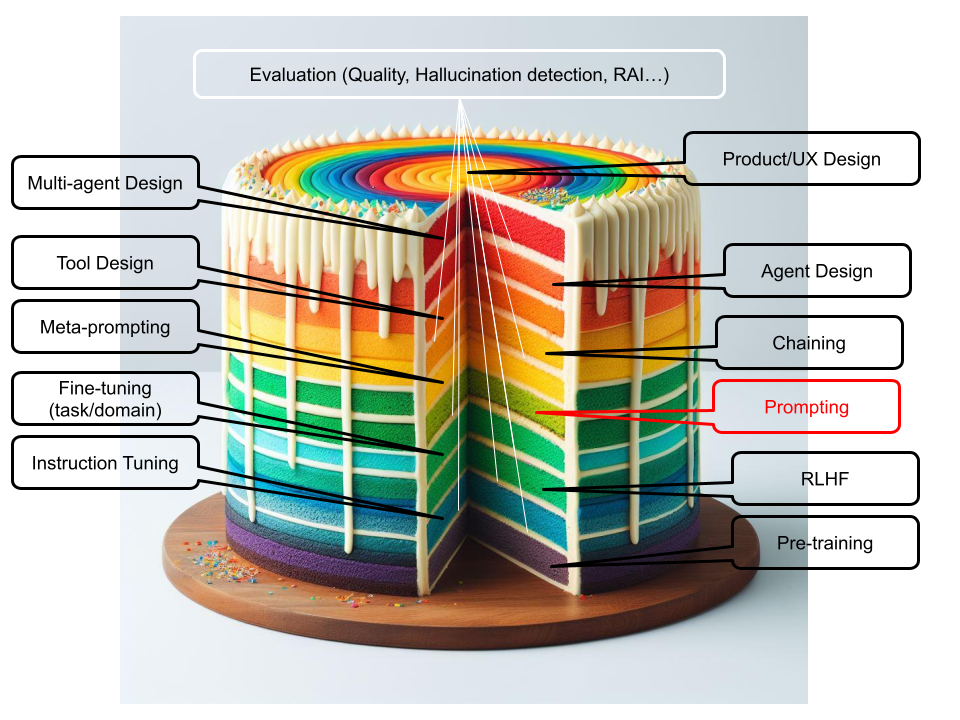 The layers of GenAI development
The layers of GenAI development
(Note: This post used DALL-E 3 to generate the multi-layered cake diagram and GPT-4 with image capabilities to generate most of the post)
Often, when GenAI application development is discussed, the conversation veers towards “Prompt Engineering.” Indeed, prompt engineering has garnered significant attention and is a vital component. However, as visualized by the multi-layered cake diagram, GenAI application development is a spectrum of processes, each equally critical. What binds these layers together, serving as the crucial “icing” in between, is Evaluation. Quality checks, hallucination detection, and RAI (Responsible AI) evaluations are seamlessly integrated at every stage, ensuring the consistency and reliability of the model.
The Layered Approach to GenAI DevelopmentPermalink
-
Foundational Layers:
- Pre-training: The base of our GenAI cake. It’s where models are given a general understanding of language through vast amounts of data.
- Instruction Tuning & RLHF: Tailoring the pre-trained models to be more specific in their responses and actions.
- Fine-Tuning (Task or Domain Adaption): Further refining the model’s skills, focusing on niche areas or specific tasks.
-
Prompting Layers:
- Prompting: Crafting specific questions or commands to elicit desired outputs from the model.
- Meta-Prompting: Beyond individual prompts, meta-prompting is about creating programmatically generalized structures for prompts. It allows for adaptability and flexibility in interactions, without needing to manually design each prompt.
- Chaining: Combining multiple prompts in sequence to guide the model towards complex outputs.
-
Design & Interaction Layers:
- Tool Design: Creating tools that allow users or developers to interact with and harness the power of the GenAI model.
- Agent Design & Multi-Agent Design: Designing how the GenAI system interacts, both as a standalone agent and in multi-agent scenarios.
-
Final Presentation Layers:
- Product/UX Design: The icing on the cake. Ensuring the final GenAI application is intuitive, engaging, and user-centric.
ConclusionPermalink
While prompt engineering remains a focal point in the GenAI development discourse, it’s essential to zoom out and appreciate the broader landscape. Each layer, from pre-training to UX design, plays a crucial role in creating a holistic and effective GenAI product. Think of it as baking a cake: while the icing might catch your eye, it’s the combined flavors of each layer that make it truly delightful.



